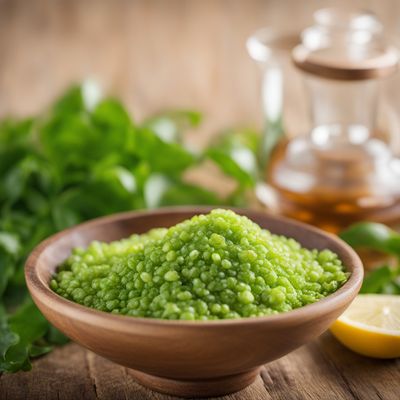
Ingredient
Other procaryotes organisms
The Hidden World of Prokaryotic Delights
Other prokaryotic organisms encompass a wide range of microscopic life forms, including bacteria and archaea. These organisms lack a nucleus and other membrane-bound organelles, making them distinct from eukaryotic organisms. Despite their small size, they have a significant impact on the culinary world. Prokaryotes can be found in various forms, such as single cells, chains, or clusters, and they come in a multitude of shapes, including spheres, rods, and spirals. Their appearance can range from translucent to pigmented, and they can be found in a variety of colors. Prokaryotes have a diverse range of tastes and textures, from tangy and acidic to creamy and smooth. They can add depth and complexity to dishes, enhancing flavors and contributing to the overall sensory experience.
Origins and history
Prokaryotic organisms have been present on Earth for billions of years and have played a vital role in shaping the planet's ecosystems. They are found in every habitat, from the depths of the ocean to the soil beneath our feet. Prokaryotes have been utilized by humans for centuries, particularly in the field of fermentation. Ancient civilizations, such as the Egyptians and Mesopotamians, used prokaryotes to produce fermented foods and beverages, such as bread, beer, and cheese. The discovery of antibiotics derived from prokaryotes revolutionized medicine and saved countless lives. Today, prokaryotes continue to be essential in various culinary practices, including the production of yogurt, sauerkraut, and sourdough bread.
Nutritional information
Prokaryotic organisms are rich in essential nutrients, such as vitamins, minerals, and amino acids. They are low in calories and fat, making them a healthy addition to a balanced diet.
Allergens
There are no known allergens associated with prokaryotic organisms.
How to select
When selecting prokaryotic organisms, such as bacteria or yeast for fermentation, it is important to choose reputable sources that provide high-quality cultures. Look for products that are labeled as "live" or "active" cultures and check for any expiration dates or storage instructions.
Storage recommendations
Prokaryotic organisms are best stored in airtight containers in the refrigerator to maintain their freshness and viability. Some strains may require freezing for long-term storage.
How to produce
Amateur enthusiasts can produce prokaryotic organisms, such as yogurt or sourdough starter, by following specific recipes and techniques. These recipes typically involve combining specific strains of bacteria or yeast with suitable ingredients and providing the right conditions for fermentation to occur.
Preparation tips
Prokaryotic organisms can be used in various culinary applications. For example, yogurt cultures can be used to make homemade yogurt by fermenting milk at a controlled temperature. Sourdough starters can be used to make flavorful bread by combining the starter with flour and water and allowing it to ferment. It is important to follow specific recipes and instructions to ensure successful fermentation and desired flavors.
Culinary uses
Prokaryotic organisms are commonly used in the production of fermented foods and beverages, such as yogurt, cheese, sauerkraut, kimchi, kombucha, and sourdough bread. They can also be used as flavor enhancers in various dishes, such as adding umami-rich miso paste to soups or using nutritional yeast as a cheese substitute.
Availability
Prokaryotic organisms are widely available in the form of starter cultures, probiotic supplements, and fermented food products in grocery stores and supermarkets worldwide.


